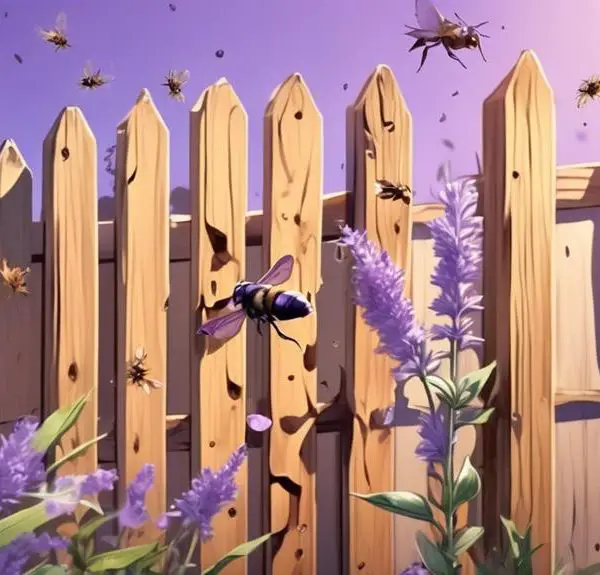Tap into the fascinating world of carpenter bees, discovering their vital role in pollination and their impact on our ecosystem.
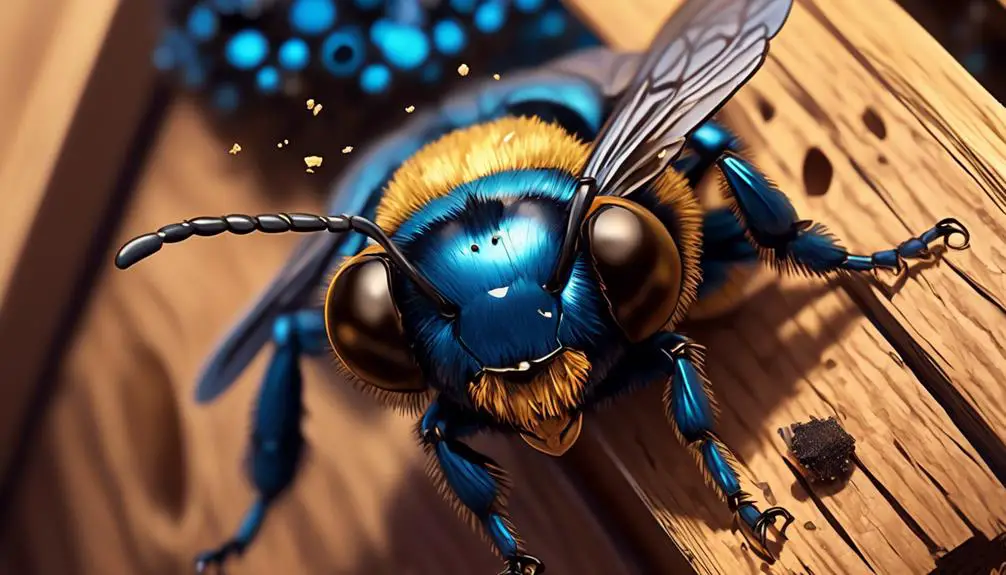
Carpenter Bee Significance
While you might perceive carpenter bees as mere pests due to their wood-boring behavior, it's essential to note their critical role in our ecosystem.
As you navigate through this discussion, you'll uncover how these industrious insects contribute significantly to pollination, which is vital for biodiversity and food crop production.
You'll also grasp their economic impact, both positive and negative, and how understanding their behavior can help in mitigating damage.
So why not stick around? There's a world of insight to gain on the significance of these often misunderstood creatures waiting for you.
Key Takeaways
- Carpenter bees play a significant role in pollination, ensuring the survival of various plants and contributing to biodiversity and food security.
- Their wood-boring habits and solitary lifestyle make them unique among bees, with distinct mating rituals and behaviors.
- While they can cause damage to wooden structures, resulting in costly repairs and replacements, they also contribute to the economy through their pollination services, boosting agricultural yields.
- Mitigation strategies such as prevention through paint or varnish application, treatment with residual insecticide, and sealing tunnels can help minimize damage and infestation by carpenter bees.
Understanding Carpenter Bee Behavior
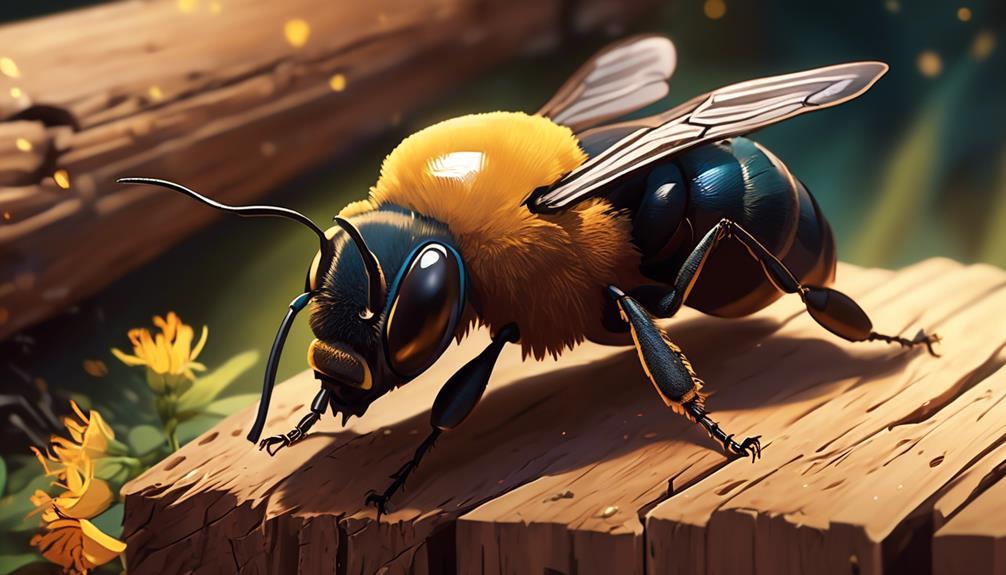
To fully grasp the significance of carpenter bees, you must first understand their unique behavior, which is characterized by their solitary lifestyle, their wood-boring habits, and their distinct mating rituals.
Unlike honeybees, which live in large, social colonies, carpenter bees are solitary insects. They don't form colonies; instead, each female bee operates independently, taking responsibility for her own reproduction and survival.
One of the most striking behaviors of carpenter bees is their wood-boring habit. They're capable of drilling into wood and creating tunnels for their nests, which they use to lay eggs and rear their young. This behavior is unique among bees, and it's what gives them their name. However, this habit can also cause damage to wooden structures, making carpenter bees a concern for homeowners.
Lastly, their mating rituals are quite distinct. It's the males that are responsible for attracting a mate. They'll often hover around their nest, guarding it from intruders and attempting to attract females. Once a female is attracted, the male will mate with her and then die, leaving the female alone to raise the next generation.
This solitary, hard-working lifestyle underscores the unique nature of carpenter bees.
Carpenter Bee's Role in Pollination
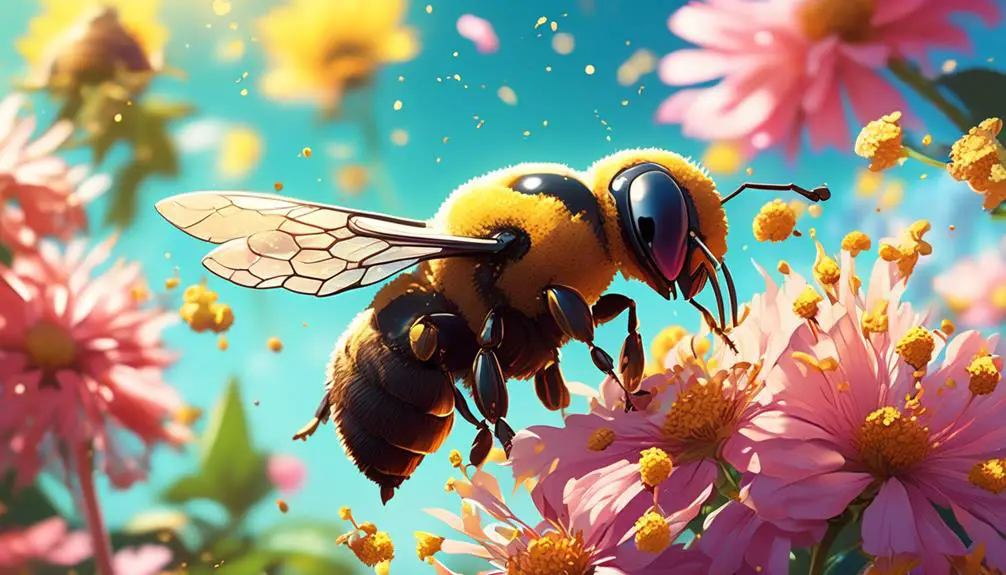
Despite their reputation as wood-destroyers, carpenter bees play a critical role in our ecosystem as prolific pollinators. You may not realize it, but these buzzing creatures are responsible for pollinating a variety of plants in your local environment.
Let's examine their contribution more closely. The table below outlines some key plants and crops that rely heavily on carpenter bees for pollination.
Plant/Crop | Carpenter Bee's Role |
|---|---|
Tomatoes | They use 'buzz pollination', a technique few insects can perform. |
Eggplants | Their large size enables them to carry more pollen. |
Blueberries | They visit flowers more frequently than other pollinators. |
Your understanding of carpenter bees should now extend beyond their wood-boring reputation. The importance of their role in pollination can't be overstated. They ensure the survival of numerous plants, contributing to biodiversity and food security.
Understanding this, you might now see carpenter bees in a different light. While they can be a nuisance due to their wood-boring behavior, their ecological importance as pollinators is undeniable, and measures should be taken to conserve their populations.
Economic Impact of Carpenter Bees
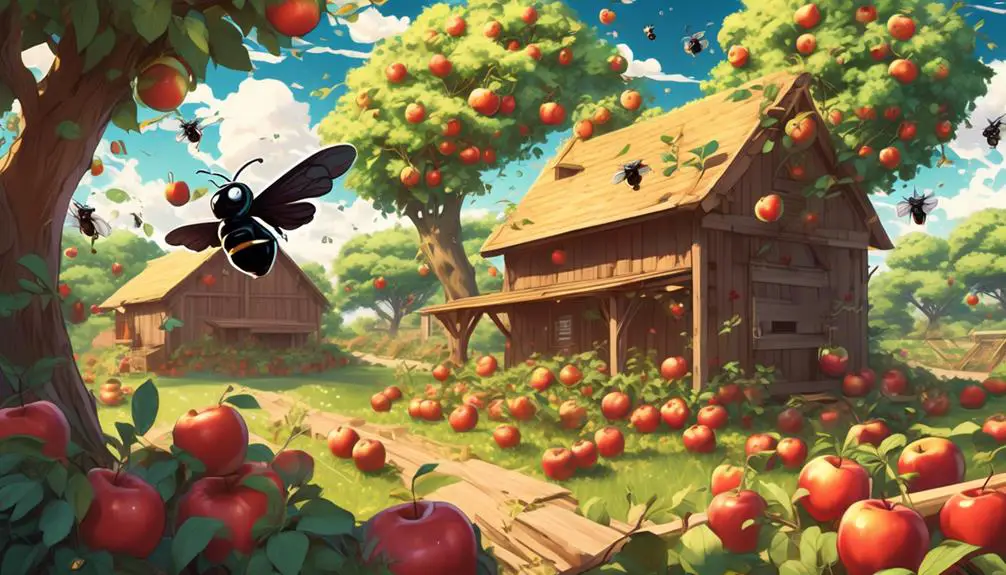
While you may appreciate their role in pollination, it's also crucial to examine the economic impact of carpenter bees. These insects, though beneficial to the ecosystem, can cause significant damage to wooden structures, resulting in substantial repair costs.
Carpenter bees bore into wood to build their nests, often choosing untreated or weathered wood. If left unchecked, they can compromise the structural integrity of wooden buildings, fences, and furniture, leading to costly repairs or replacements. In the United States alone, it's estimated that carpenter bees cause around $300 million in damages annually. This figure doesn't include the expenses associated with preventive measures homeowners must take to deter these bees.
On the flip side, carpenter bees contribute significantly to the economy through their pollination activities. They're key pollinators of open-faced flowers, aiding in the production of fruits and vegetables. This role boosts agricultural yields and, in turn, the economy. While it's challenging to quantify this contribution, it's evident that carpenter bees play a substantial economic role.
Carpenter Bees and Biodiversity
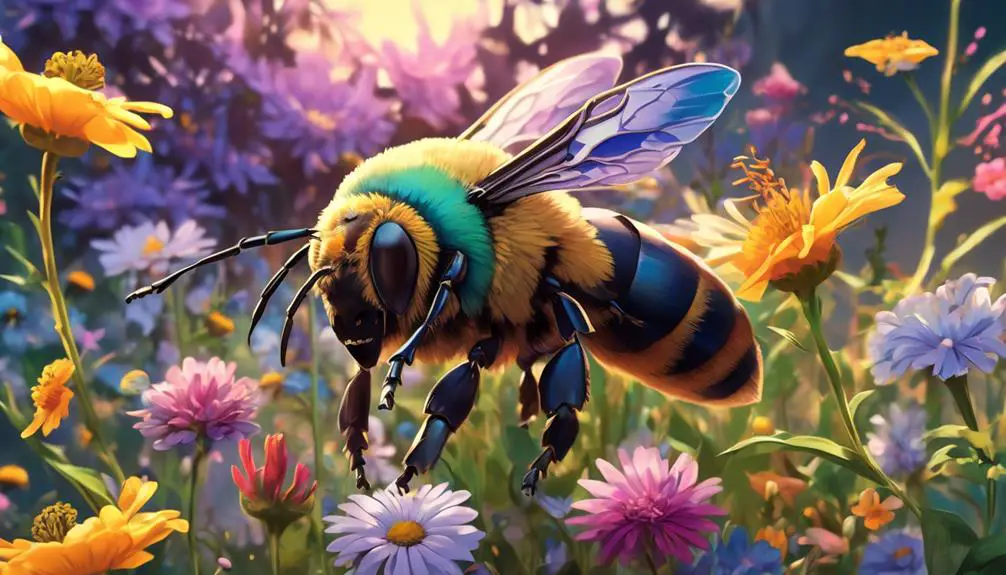
Shifting our focus from the economic aspects, let's consider the role of carpenter bees in promoting biodiversity. These bees are essential contributors to biodiversity due to their roles in pollination. Unlike honeybees, which tend to focus on a few species, carpenter bees are generalists, pollinating a diverse range of plants.
Carpenter Bees | Biodiversity Impact | Example |
|---|---|---|
Pollinators | Enhance plant genetic diversity | Pollination of various plant species |
Prey | Support the diet of certain birds/insects | Woodpeckers, certain wasp species |
Habitat Engineers | Create nesting sites | Beneficial for other insects and birds |
Food Source | Nectar and pollen feed many insects | Butterflies, other bee species |
Seed Dispersers | Aid in plant propagation | Certain fruiting plants |
Given their broad feeding habits, they help maintain the genetic diversity of many plant species. Furthermore, they also serve as prey for birds and certain insects, contributing to the food chain. In creating their nests, they inadvertently provide shelter for other species. Their nectar and pollen feed many insects, promoting insect diversity. Lastly, they indirectly aid in seed dispersal by pollinating certain fruiting plants. Hence, carpenter bees are biodiversity promoters.
Mitigating Carpenter Bee Damage
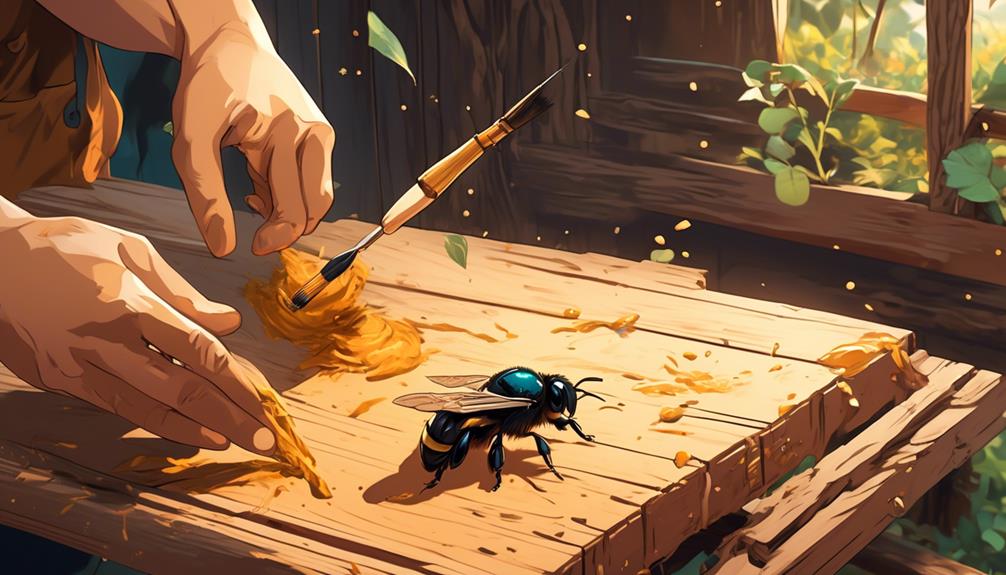
Although carpenter bees play a crucial role in preserving biodiversity, it's also essential to understand and address the structural damage they can cause to wooden structures. Carpenter bees bore into wood, creating tunnels for nesting which can weaken structures over time.
To mitigate this damage, you need a two-pronged approach: prevention and treatment. For prevention, you can apply a coat of paint or varnish to your wooden structures. Carpenter bees prefer untreated wood, so this simple step can significantly deter them.
If you already have an infestation, treatment is necessary. Consider using a residual insecticide in the bee tunnels. It's best to apply this in the evening when bees are less active. After a few days, you can seal the tunnels with a wood filler to prevent re-infestation.
Conclusion
So, you see, carpenter bees aren't just pesky insects. They're vital pollinators, contributing to our economy and biodiversity.
However, their wood-boring behavior can cause damage, which needs mitigation. Understanding their significance can help us coexist, appreciating their role in our ecosystem while managing their potential harm.
Let's remember, they're not just buzzing nuisances, but crucial players in our world's intricate ecological balance.

